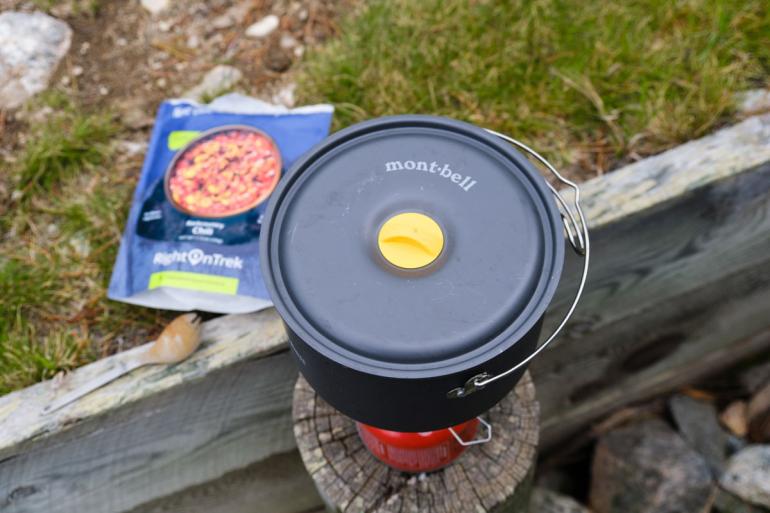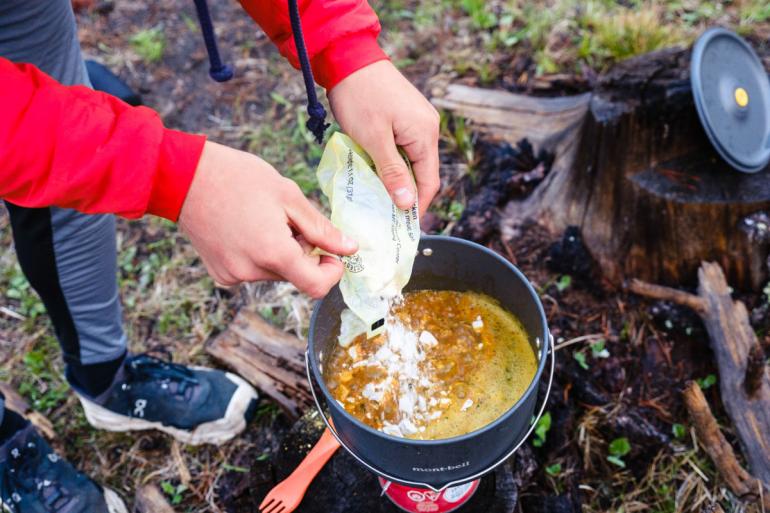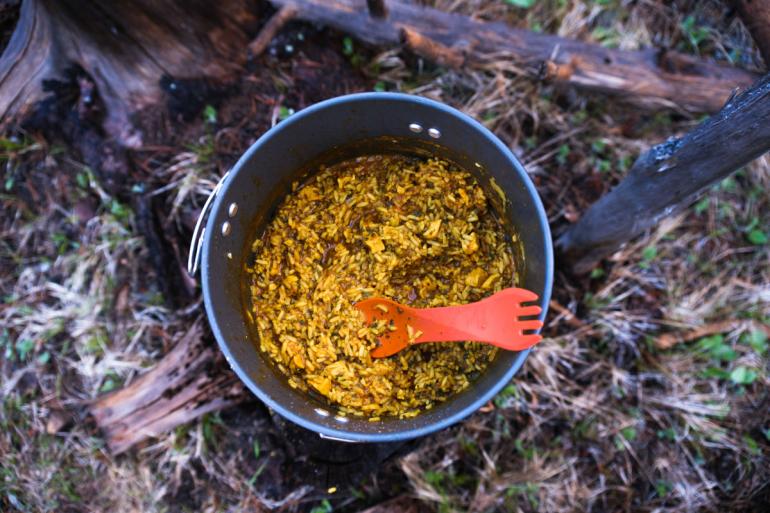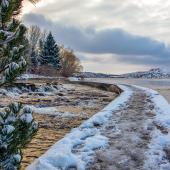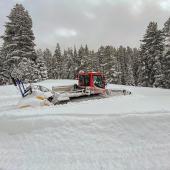Backcountry Buffet
Meal-planning tips.
A lot that can go wrong in the backcountry: afternoon storms, encounters with wildlife, and injuries are all events that we can't predict. But there are a lot of other things we can control—preparation being one of them. And of all the things to account for ahead of time, proper provisions tops the charts. Nutrition can make or break a backpacking trip, and with factors like pack weight, caloric expenditure, and dietary restrictions, making a seamless meal plan is no easy task. Here are some tips and tricks for food prep on your next backcountry excursion.
Type of Trip
First off, consider your objective and preferences. If you’re heading out on an easy meander, you can get away with a few extra bells and whistles, like larger pots and pans, or a bigger stove than your Jetboil. However, if you’re going for speed and mileage, consider a lighter stove-pot combo that’ll save you weight. Cooking as a group can be efficient, so long as everybody is on board. No reason to bring three stoves if you can get the job done with one or two.
Same goes for food. When weight is a concern, pre-made backcountry meals make a great option. They've come a long way in recent years, so it’s not hard to find options that meet everyone’s dietary requirements, whether it's vegan, lactose-free, or just something that tastes good.
How Much to Bring
Caloric intake varies depending on size and metabolism, but in general figure 1,800-2,400 calories per day for women and 2,000-3,000 per day for men. It might sound like a lot, but on a vigorous outing you could burn up to 4,000 calories per day. As a rule of thumb, to figure out what you’re burning, add 200-400 calories per hour of moving time. This of course depends on all sorts of factors including terrain, fitness, weight, and the season. You’ll want to replenish all the energy you burn, so be diligent with your planning. Do your best to gauge the effort required each day and how much fuel you'll need. Pre-made meals have the added bonus of listing calories on the package, which is helpful for calculating caloric replenishment.
What to Bring
Now that you’ve determined what you’re doing and how much food you'll need, you can get to the bottom of what to bring. In the big picture, this can be overwhelming—there are mixes, chews, gummies, gels, and what the heck is gorp? Slow down, friend. The best way to solve this puzzle is to break it down, piece by piece. Simply put, you’ll need breakfasts, lunches, dinners, and snacks. Walk through each day of your trip, allocating food for each meal. Compare the total calories with the total weight and see if it’s manageable. Consider the group size and stove setup to determine how much real food you can bring compared to freeze-dried meals. Ultra-light adventurers may choose to ditch the cooking supplies altogether and go with easy, ready-to-eat meals like bars and packets (tuna, peanut butter, instant oatmeal). Not altogether though, that would be gross.
Personally, I’m (mostly) vegetarian, so good backcountry meals used to be all but nonexistent. For a long time, I either compromised my diet or was forced to eat bland meals and bars to accommodate. Couple that with routinely forgetting my snacks, and I had quite a few unsatisfying meals.
Luckily, RightOnTrek has gone out on a limb to make the meal-planning process a whole lot easier. The newly-formed company employs sophisticated software to design plans for multi-day trips, so you can cut out all the guessing, mixing, and matching. You give them the specs of the trip and they deliver the meals to your doorstep. Simple as that.
They’ve got great, hardy options for vegetarians, like Backcountry Chili and High Country Pad Thai, while also carrying the classics for carnivores as well. Their meals come with easy to follow cooking instructions, which is something everyone can enjoy, whether you're cooking with the one-, two-, or four-person portions. One of the coolest things of all: their bio-based packaging makes great fire-starter after the label is removed, so no need to pack out those goopy pouches.
To wrap up, proper meal-planning for the backcountry is vital, but that doesn’t mean it needs to be complicated. After you break it down, or get a little help from the pros, you’ll be whippin’ up some gourmet grub in no time.
For more info on backcountry meal-planning, or to purchase meals for your next trip, visit rightontrek.com.




